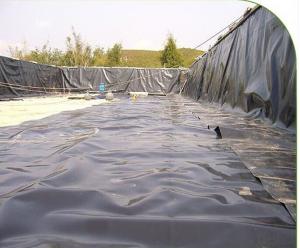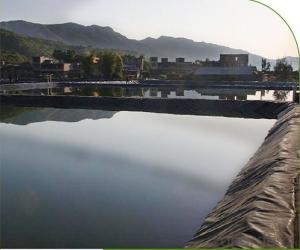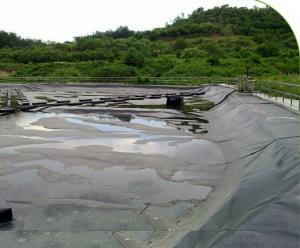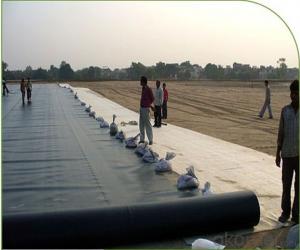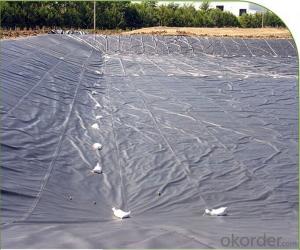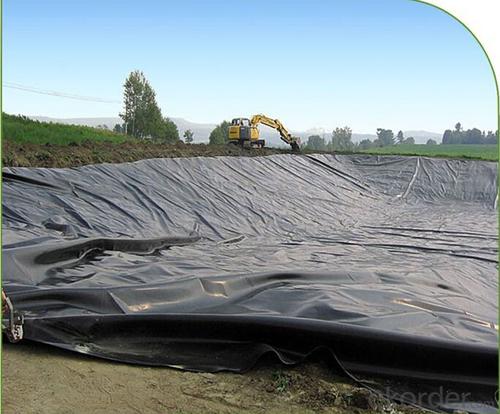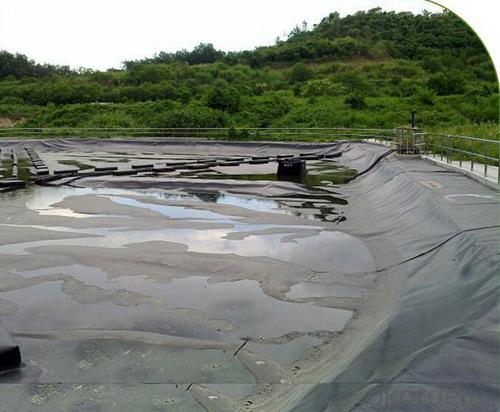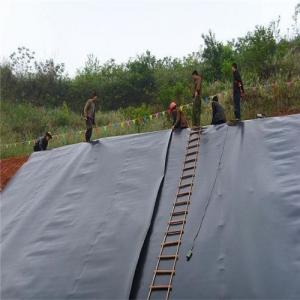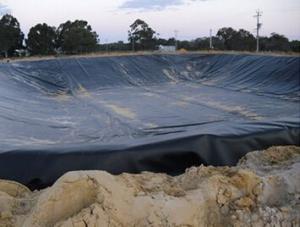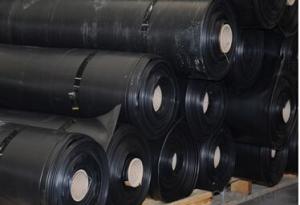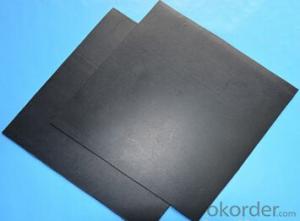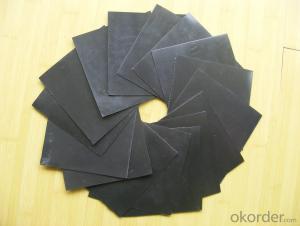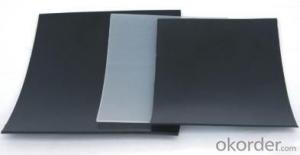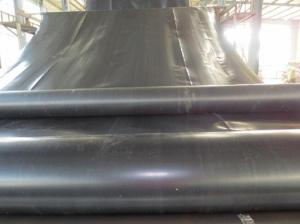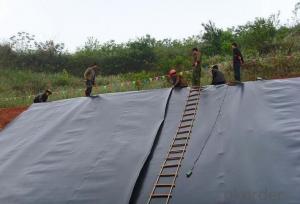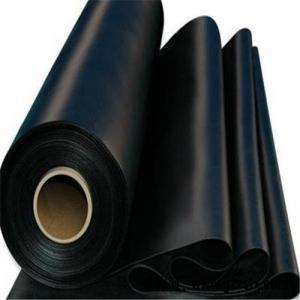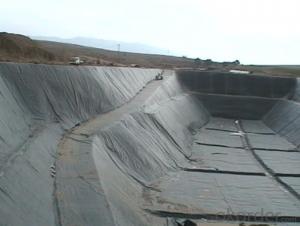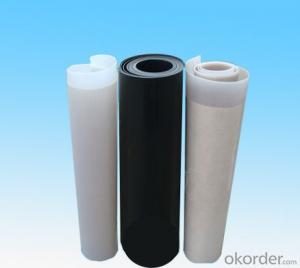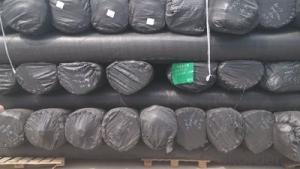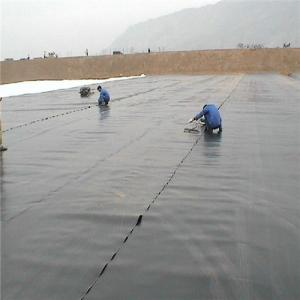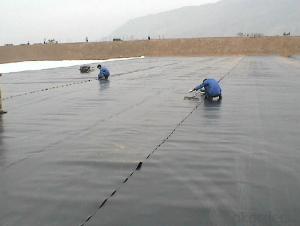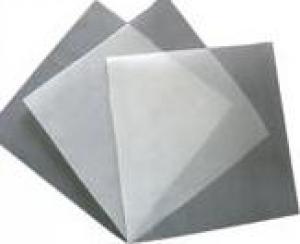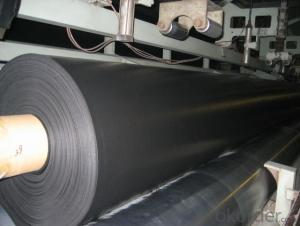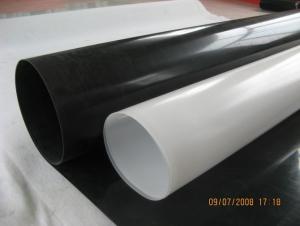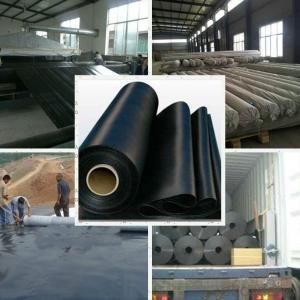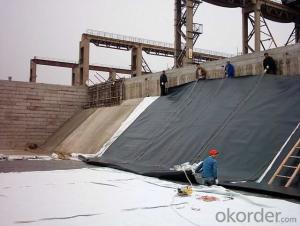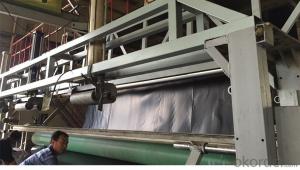ASTM HDPE Geomembrane for Aquiculture and Landfill Project Use
- Loading Port:
- Tianjin
- Payment Terms:
- TT or LC
- Min Order Qty:
- 5000 m²
- Supply Capability:
- 200000 m²/month
OKorder Service Pledge
OKorder Financial Service
You Might Also Like
HDPE Geomembrane Detail Specifications:
Type: | Geomembranes | Place of Origin: | Shandong, China (Mainland) | Brand Name: | CMAX |
Model Number: | 0.1mm-4.0mm | Material: | EVA, HDPE, LDPE, LLDPE, PVC, HDPE | Thickness: | 0.1mm - 4.0mm |
Color: | white, black, red ect. | Roll width: | 1m-8m | Roll length: | 50-100m |
MOQ: | 100 m2 | Certification: | CE/ISO9001/ ISO14001 | Sample: | available for free |
Package: | by PP woven bag | Payment: | by T/T |
HDPE Geomembrane Feature:
--Good mechanical properties
--High tear strength, deformation and adaptable, puncture resistance,
--Anti-aging, anti-ultraviolet-resistant,
--Anti oil and salt, pH, anti-corrosion, high temperature-resistant, non-toxic, long service life. water,
--Drainage, seepage, the good effect of moisture, width, thickness of the full range of specifications
and low cost, simple construction.
HDPE geomembrane Application:
1) Environmental protection sanitation (such as solid waste landfills, sewage treatment plants, power plants Chi-conditioning, industrial, hospital solid waste, etc.) .
2) Water (such as rivers, lakes and reservoirs of the anti-dam, plugging, reinforcement of the canal seepage, the vertical wall of the heart, slope protection, etc.).
3) Municipal Engineering (subway, on the ground floor of the building, planted roof, the roof garden of anti-seepage, sewage pipes lining, etc.).
4) Landscape (man-made lake, river, reservoir, golf courses reservoirs of the substrate, slope protection, green lawn of the waterproof moisture, etc.).
5) Petrochemical (chemical plants, oil refineries, gas storage tanks of the anti-chemical reaction tanks, sedimentation tanks of the lining, etc.).
6) Mining (washing and pool heap leaching, the ash-field, dissolved, precipitation, the yard, the tailings seepage substrates, etc.) .
HDPE Geomembrane Packaging & Delivery:
Packaging Details: | HDPE geomembrane are packed into roll in PP woven geotextile or as client' s request |
Delivery Detail: | in 10 days after receive advance payment |
HDPE Geomembrane Photos:
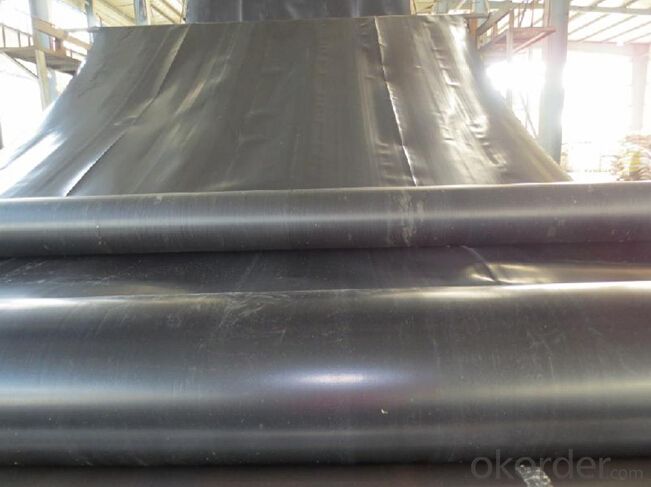
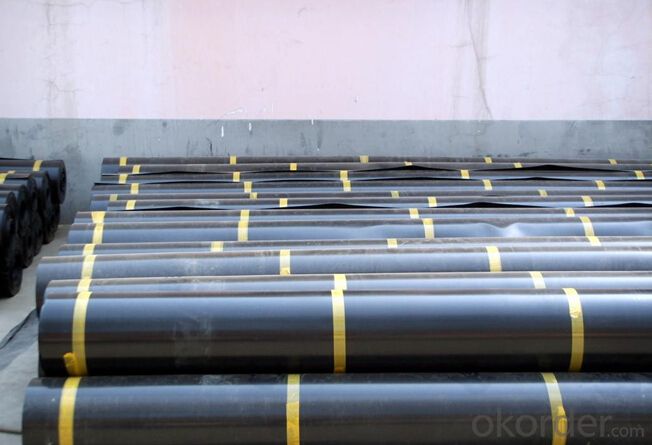
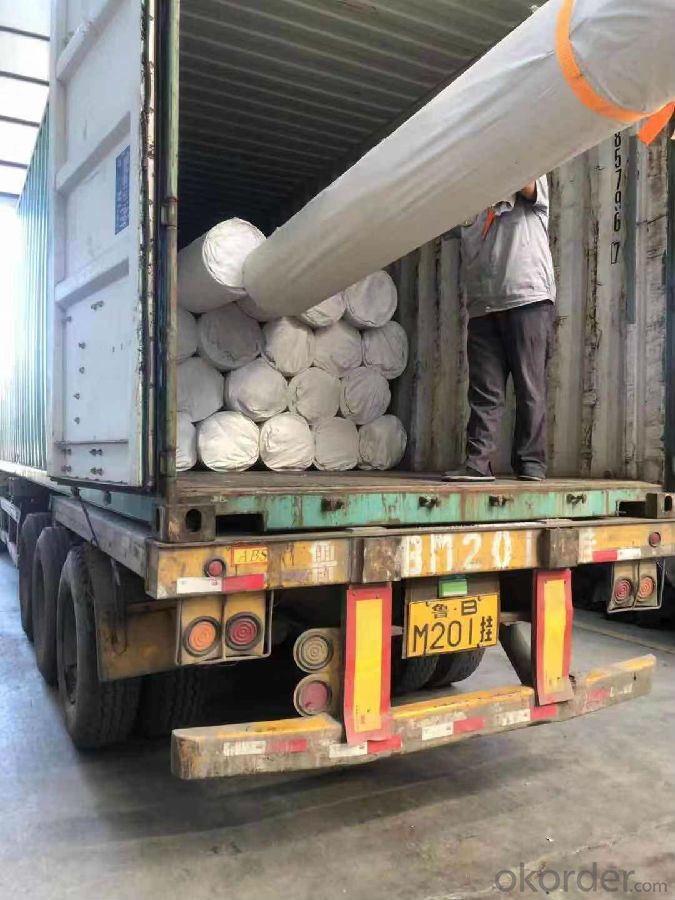
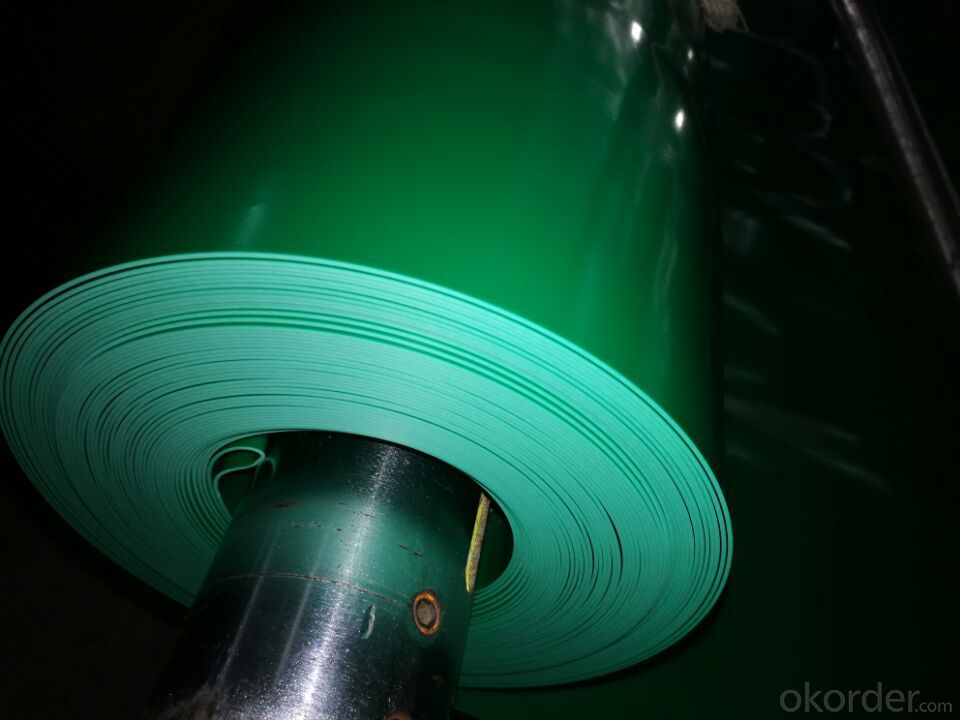
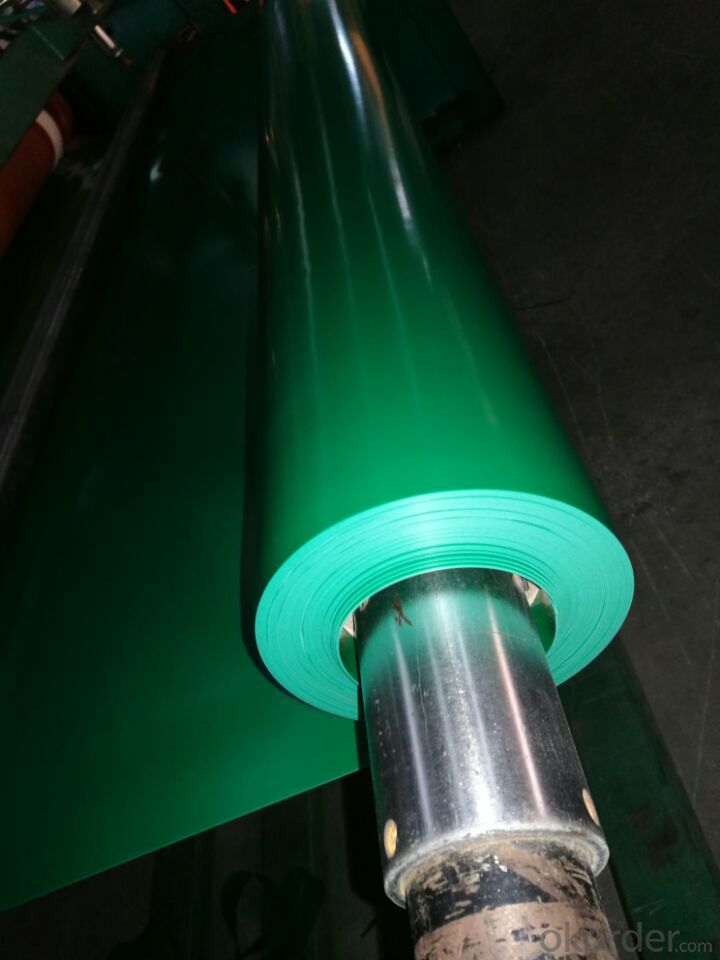
- Q: Are HDPE waterproof roll, HDPE anti-seepage film and HDPE geomembrane the same?
- HDPE anti-seepage film uses resin of polyethylene. The high density polyethylene is about 2.5%. Carbon black, inhibitor, antioxygen, ultraviolet light absorber, stabilizer and other auxiliary materials are made through three-layer co-extrusion technology. HDPE geomembrane is made from 97.5% high-quality polyethylene, 2.5% carbon black, microscale antioxygen and heat stabilizer through special co-extrusion technology.
- Q: What are the factors to consider when selecting a geomembrane?
- When selecting a geomembrane, there are several factors that should be considered. These include the type of application, the required strength and durability, the chemical compatibility with the surrounding environment, the thickness and flexibility needed, the installation method, and the cost-effectiveness of the material. Additionally, factors such as the site's temperature variations, UV exposure, and potential for punctures or abrasions should also be taken into account to ensure the chosen geomembrane meets all the necessary requirements for the specific project.
- Q: What is the recommended thickness of HDPE membranes when the membrane is applied in landfills? How to decide the thickness of the membranes?
- 1.5mm is required in urban construction ministerial standard. 2.0mm is required in national standard. You can chose one of them according to the requirements of design.
- Q: How to clean the computer keyboard film?
- This film better not to clean in plain boiled water. It is better to clean with alcohol. If the alcohol does not work. The quality of your film may not be good. You are suggested to buy a ney one in the computer store.
- Q: Can geomembranes be used in dam construction?
- Yes, geomembranes can be used in dam construction. Geomembranes are synthetic materials that have excellent qualities such as high strength and impermeability. These qualities make them suitable for use in dam construction to prevent water seepage and maintain the structural integrity of the dam. Additionally, geomembranes also provide environmental protection by acting as a barrier against pollutants, ensuring the safety and longevity of the dam.
- Q: What are the advantages of membrane switch series?
- Membrane switch has many advantages: It is resistant to water, dust, oil and harmful gas erosion, and is stable and reliable in properties. It has small volume, long service life, and convenient installation. Its panel can be washed without damage of characters on it. It also has rich color and elegant appearance. Your product will obtain more distinct features of the time by using the membrane switch. Main types of the membrane switch: With rigid or flexible printed circuit board as substrate, the membrane switch panel is made with plastic (polycarbonate, polyester, etc.) faceplate with colored decorative patterns printed on it. It is installed with keys with hand feeling or not. It is a kind of electronic component integrating switch function with decorative function, and also has a new human-machine interface. Its switching circuit and connection mode of the complete appliance can be finished by welding or plug-in.
- Q: Are geomembranes suitable for wastewater treatment?
- Yes, geomembranes are suitable for wastewater treatment. They are impermeable membranes that can effectively contain and control the flow of wastewater, preventing it from infiltrating into the surrounding soil or groundwater. Geomembranes also provide a barrier that helps to prevent the escape of contaminants from the wastewater, ensuring proper containment and treatment. Moreover, these membranes are durable, resistant to chemicals, and can withstand harsh environmental conditions, making them an ideal choice for wastewater treatment applications.
- Q: Can geomembranes be used for landfill capping?
- Yes, geomembranes can be used for landfill capping. They are often used as a barrier to prevent the infiltration of rainwater and the escape of gases from the landfill, providing a reliable and effective solution for capping landfills.
- Q: What determines the hardness of paint film
- it is one of the important properties of machinery strength of paint film. Its physical meaning can be understood as the resistance of the film surface to the action of the other hardness of the larger objects. It can be determined by measuring the ability of the film to resist deformation when a certain mass load is exposed on the surface of the film, (including the ability of deformation caused by collision, indentation or scratching). the test equipment should have damped pendulum hardness, scratch hardness, indentation hardness ,ect..
Send your message to us
ASTM HDPE Geomembrane for Aquiculture and Landfill Project Use
- Loading Port:
- Tianjin
- Payment Terms:
- TT or LC
- Min Order Qty:
- 5000 m²
- Supply Capability:
- 200000 m²/month
OKorder Service Pledge
OKorder Financial Service
Similar products
Hot products
Hot Searches
Related keywords

